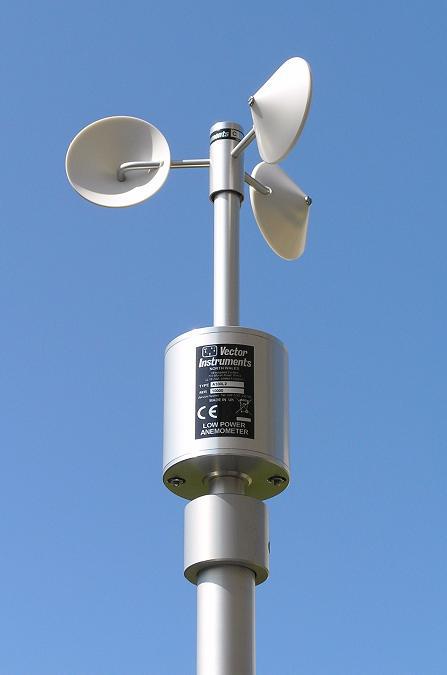Anemometers Introduced: Understanding Their Importance in Ecological Tracking and Precaution
The function of anemometers in environmental tracking and security steps is commonly ignored, yet their value is obvious. From weather forecasting to aviation security, anemometers play a critical function in providing precise information that notifies decision-making procedures and boosts total safety.
History of Anemometers
The development of anemometers can be traced back to the old human beings where basic wind determining gadgets were first used. One of the earliest recognized anemometers was the hemispherical cup anemometer created by Leon Battista Alberti in the 15th century.
Over the years, developments in innovation led to the growth of more modern anemometers, consisting of ultrasonic anemometers and laser Doppler anemometers, providing enhanced precision and performance in determining wind speed and direction. The background of anemometers showcases an impressive trip of technology and development in the field of weather forecasting.
Kinds Of Anemometers
Throughout the area of meteorology, different sorts of anemometers have been developed to accurately measure wind rate and direction. The most typical kind is the mug anemometer, which includes three or 4 mugs placed on horizontal arms that turn with the wind. As the cups rotate, the speed at which they revolve is directly symmetrical to the wind speed. One more widely made use of type is the vane anemometer, which features a tail or fin that straightens itself with the wind instructions. This alignment enables the gadget to figure out the wind direction. Sonic anemometers use ultrasonic signals to measure wind rate and instructions properly. They are generally used in research study applications as a result of their high accuracy. Hot-wire anemometers operate based upon the concept that the cooling result of wind on a warmed cord is proportional to the wind rate. These anemometers appropriate for determining reduced wind speeds with high accuracy. Each type of anemometer has its toughness and is chosen based on the specific requirements of the surveillance job at hand.
Applications in Weather Forecasting
Having reviewed the various types of anemometers made use of in meteorology for determining wind rate and direction, it is important to discover their practical applications in the field. Anemometers play a vital duty in meteorology by providing exact and real-time information on wind problems (anemometer). Meteorologists use anemometers to keep track of wind rate and instructions to anticipate weather condition patterns, issue warnings for extreme weather condition continue reading this events like cyclones, tornados, and tornadoes, and analyze weather for aeronautics security
In meteorology, anemometers assist in comprehending regional and regional wind patterns, which are vital for forecasting climate adjustments and figuring out climatic trends. These tools are additionally utilized in research to research microclimates, urban heat islands, and air pollution dispersion. Additionally, anemometers are utilized in farming to optimize plant administration methods, such as irrigation and pesticide application, based on wind conditions.
Importance in Aeronautics Safety
An integral aspect of making sure aeronautics safety and security depends on the meticulous monitoring of wind conditions utilizing anemometers. Anemometers play an important function in air travel by supplying real-time information on wind speed and direction, helping pilots in making notified choices during flight, landing, and liftoff. Uncertain and strong winds can dramatically affect airplane procedures, making it necessary for air travel authorities to depend on precise wind measurements to make sure the security of guests and crew.

In the dynamic environment of aeronautics, my website where even small changes in wind rate and instructions can have profound effects, click to investigate anemometers stand as indispensable tools for advertising secure and safe air traveling.
Duty in Environmental Study
Anemometers play an essential duty in environmental study by offering vital data on wind rate and instructions. By accurately determining wind characteristics, anemometers assist scientists assess the movement of toxins in the air, assess the effect of commercial discharges, and predict the spread of pollutants in the setting.


Conclusion
In conclusion, anemometers have played an important role in ecological surveillance and security steps. Comprehending the significance of anemometers is crucial for accurately measuring wind speed and direction, which is essential for predicting weather patterns, making certain safe aeronautics operations, and carrying out environmental research studies.
One of the earliest recognized anemometers was the hemispherical mug anemometer designed by Leon Battista Alberti in the 15th century. Over the years, improvements in technology led to the development of more modern-day anemometers, consisting of ultrasonic anemometers and laser Doppler anemometers, supplying enhanced accuracy and performance in gauging wind rate and direction. Hot-wire anemometers operate based on the principle that the cooling effect of wind on a heated cable is symmetrical to the wind rate. Meteorologists use anemometers to keep track of wind speed and direction to anticipate weather patterns, concern warnings for serious weather condition occasions like tornados, cyclones, and twisters, and analyze atmospheric problems for aeronautics security.
Understanding the value of anemometers is important for precisely measuring wind speed and instructions, which is vital for anticipating weather condition patterns, making sure secure aeronautics operations, and conducting environmental research studies. (anemometer)
Comments on “Selecting the Right Anemometer: A Comprehensive Buying Overview”